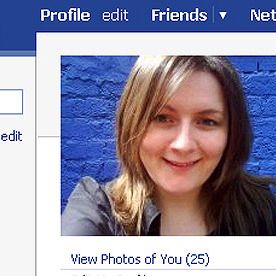It's the second week of August and if you don't have a few gigabytes of holiday snaps to sort through by now then you probably will by the end of the month. Whether you've been to Tenerife or Tenby, we all like to show off a little about what we've been up to but the trouble is that once you publish your pics on Facebook, the whole world will see just how you looked in beachwear.
You can pick and choose your shots all you like but, if you got bitten by a mosquito on the forehead or spent 24/7 with some good old English sunburn, then you might want to see if there's something you can do to ease your Facebook fears. So, here are seven ways to touch up your Facebook photos:
Take them properly in the first place
An obvious one really but we can't stress it enough. Taking a good picture on the spot is the simplist way to ensure you're happy with what you're going to publish. It's digital photography. Take as many as you like, check them on your camera's LCD and if you're not happy, take some more. There's a whole host of in-camera settings you can try to get the results you're after. The flash will accentuate blemishes, so worth switching of; you can choose a softer colour palate to make skin look a little smoother and you can even buy special cameras such as...
HP Photosmart slimming camera
Right or wrong, HP has a range of compact cameras which offer a slimming filter. The frightening part is that it actually works pretty well. It's subtle enough to take someone down by a dress or waist size without causing any obvious distortion - you can also ramp it up for more ridiculous results - and either way it offers you the "before" and "after" versions to choose between when you're done.
In-camera Editing
Most digital cameras bought in the last two years, DSLR or compact, will offer some level of in-camera picture editing. They're by no means a substitute for a graphics program on your PC or Mac but one or two of the filters work quite well.
The most useful of the bunch is usually the red-eye remover. Not all cameras have a red-eye reduction system for taking the shots in the first place and those that do are often cause all your subjects to close their eyes after a morse code of blinding flashes before the picture's actually taken. So, turn it off and use the after-filter instead.
More advanced cameras offer better editing and a good one to look for in the DSLRs are the lighting effects such as the Nikon D-Lighting system which allows you to adjust the exposure after a picture has been taken. Use it to brighten up your dull shots and tone down those over the top.
Photoshop, GIMP, Paint.NET et al
If you're serious about image post-production, then there's no substitute for some good computer software. They're not easy to use to begin with but there are a world of excellent tutorials out there for all of them. While GIMP and Paint.NET are free of charge, Abode Photoshop is the most widely used and the package for which there's most support.
Each has more functionality than most people will ever need but here are a few of the more simple but powerful tools to start off with:
Spot Healer Tool
- Good for removing small blemishes by smoothing over the same tone and texture as the surrounding area; rather like using a cover-up stick.
Clone Stamp Tool
- Better for slightly larger areas; works by copying the texture of one part of your image onto another and produces a more natural, less homogenised effect than the spot healer.
Liquify
- Found under "Filter/Distort" in Photoshop and is a wonderfully easy tool for enlarging certain body parts or for tucking the background in to make certain other body parts appear smaller. Beyond that, it's also fun for messing around with other people's faces.
Colour Correction
- Plenty of slider settings to play with here. Adjust the hue, saturation, brightness and contrast as well as the reds, greens and blues individually to take the edge off very red skin tones, whether that be from sunburn or a little too much to drink.
Kodak Digital Gem Airbrish Professional Plug-in
Don't be put off by the "professional" part of the title. The results are said to be very good but it's far simpler to use than a full software package. For £65 it offers a lightweight system that sits on your Mac or PC and allows you to edit images straight from the source, be that you camera, scanner or a picture CD.
A series of slider options allow you to reduce noise levels and create smoother skin textures and tones without blurring or the losing detail of your shots. Great for getting rid of wrinkles and bad skin days without needing to read up on it all first. Also compatible as a plug-in for Photoshop.
Snappy Snaps Airbrushing
If you really can't face doing the work yourself, then Snappy Snaps run a airbrushing/retouching service. It will involve the embarrassment of sitting with a member of staff and telling them exactly which parts of your anatomy you wish to be altered and it'll also cost you a minimum of £5 per picture. Not cheap and rather awkward.
Retouch your attitude
Nobody's perfect and anyone that is, is probably incredibly dull. It's very easy to take this kind of practice too far and Pocket-lint would far sooner people were comfortable enough with their friends and themselves not worry about how they look in their Facebook snaps. Probably worth sparing the world full-frontal nude ones, though.
Do you have any tips to share? Let us know in the comments below:

